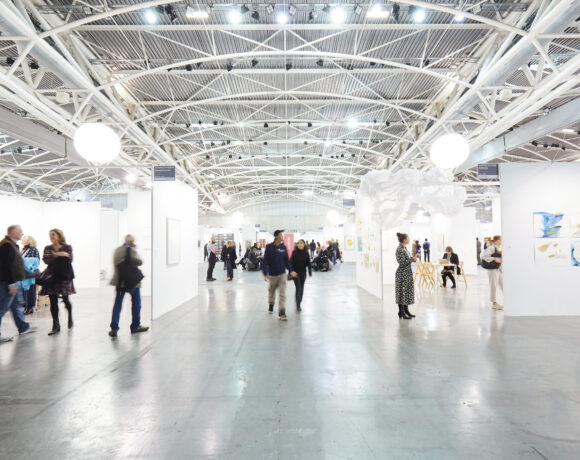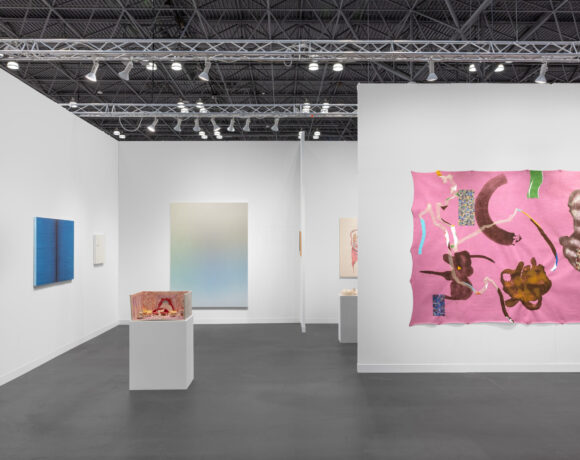The Phair | Photo Art Fair, the annual event dedicated to photography, now in its fourth edition, opens to the public today in Pavilion 3 of Torino Esposizioni, which until Sunday 7 May will host the artistic projects of forty carefully selected galleries that reflect on the current statute of the photographic image. The common thread of this edition is the exploration of the development of a photographic idea and its expansion, transformation and reinterpretation, as well as its hybridization with other media. Before visiting the fair, we asked Roberto Casiraghi, creator of the exhibition and former founder of the The Others art fair, which takes place in November in Turin, a few questions.

The Phair | Photo Art Fair, photo Daniele Muzzi, courtesy The Phair | Photo Art Fair
Emanuela Zanon: How did the idea of this new appointment dedicated to photography enthusiasts come about and how has it evolved over these four years?
Roberto Casiraghi: The idea of a new appointment was born from the need, in our opinion, to specialize both supply and demand. Even in the art world we think we are witnessing the same phenomenon that affected the great generalist fairs from the 70s and 80s, the trade fairs that slowly gave way to sector fairs, up to closing the gates in favor of a multitude of specialized events. We believe precisely that, apart from some almost “unshakeable” exhibitions, the future of the exhibition world is in the direction of fragmentation. In its four years of life The Phair | Photo Art Fair has maintained a constant increase in quality, it has never renounced its specificity as a proud sum of small exhibitions, in which each space presents itself with a strong project carefully created by the exhibitors. This year the consolidation has allowed us to open enrollments also to a prestigious group of foreign galleries.

Mario Giacomelli, Io non ho mani che mi accarezzino il volto – Pretini, 1961-63, courtesy collezione Massimo Prelz Oltramonti © Archivio Mario Giacomelli
What are the specific features of the Turin project compared to other Italian sector fairs, such as MIA Photo Fair in Milan?
The platform is completely different because MIA is mainly, if not exclusively, a fair created with the participation of photography galleries while The Phair | Photo Art Fair hosts galleries that participate with projects related to photography, not necessarily photography galleries. The second difference lies in the fact that MIA also hosts photographers to exhibit in spaces reserved for them, while The Phair has the galleries as its only interlocutors.

Diango Hernandez, Diamond, 2008, c-print 50 x 70 cm, courtesy Wizard Gallery
This year, for the first time, the event will also welcome galleries from abroad. How did you manage to involve exhibitors from France, Germany, Switzerland and Slovakia in such a short time, as well as some highly prestigious national presences?
I believe that the history, albeit brief, of the fair, the word of mouth of colleagues who participated in past editions, the reputation of Turin as a city devoted to photography and cultured and anticipatory collecting, the work of the team of curators and the our office and lastly, but only out of modesty, fortune were the determining factors.

Guia Besana, Show #2, 2021-2022, stampa fine art su dbond e cornice alluminio a specchio, 120 x 90 cm, courtesy VisionQuest 4rosso gallery
How will the presence of recognized masters and emerging young artists be dosed among the proposals of the galleries present at the fair? Are there any dedicated sections?
The fact of offering the public such a specialized and special fair makes the sections useless; even the small number of participants offers usability that does not require further subdivisions and the attentive visitor will discover without any guidance what delicate and intriguing balances the curators have managed to build in the various spaces with their projects and authors.

Tania Brassesco and Lazlo Passi Norberto, Noise ensemble, 2023, medium format digital photography, c-print, 98 x 131cm, courtesy Ségolène Brossette Galerie
In your opinion, how is the photographic language evolving in the age of multimedia and what challenges does it present from the point of view of the exhibition set-up as it is no longer exclusively linked to printing on paper?
To answer this question we would need a curator and none of our group has the ambition to be one; it is certain that in examining the various projects, gallery owners and artists increasingly we notice an expansion of the media, albeit of photographic inspiration

Eric Antoine, Rose, 2021, fotografia ambrogio, 30 x 24 cm, courtesy Galerie Berthet-Aittouarès
What opportunities does photography offer today to collectors who choose to focus on this medium?
Photography offers infinite opportunities if one does not limit oneself to bare speculation: it is an art form that is often easy to understand without falling into expressive banality, it has a lower access cost even for established masters, it is easier to place in domestic environments and we hope it will facilitate access to the world of art and collecting for those groups of young people who today have the pleasure of discussing and enjoying beauty and quality without draining huge resources.
Info:
Graduated in art history at DAMS in Bologna, city where she continued to live and work, she specialized in Siena with Enrico Crispolti. Curious and attentive to the becoming of the contemporary, she believes in the power of art to make life more interesting and she loves to explore its latest trends through dialogue with artists, curators and gallery owners. She considers writing a form of reasoning and analysis that reconstructs the connection between the artist’s creative path and the surrounding context.






NO COMMENT